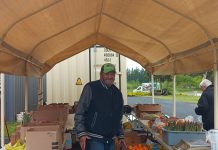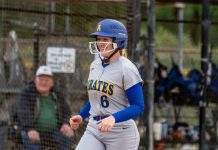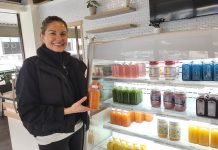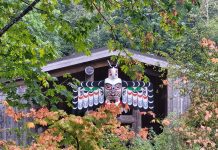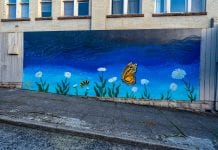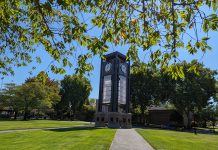Some people envy teachers for what they see as three months of summer vacation. What they don’t realize is that education is an ongoing process of learning and teaching that continues year round, especially for two W.F. West High School teachers; Janelle Williams and Sue Ardington.
Recently, the two teachers and Seth Schneider, a W.F. West graduate and PhD candidate at Washington State University, spent two weeks teaching in China. Williams taught public speaking, Ardington focused on the topic of immigration policy and Schneider specialized in genetics and cell biology.

It all started last February when 28 Chinese students came from Guangzhou Foreign Studies School to observe the new STEM wing and program at W. F. West. They were on break from their school and wanted to know if any STEM students or teachers would like to visit their program.
Williams and Ardington were immediately interested. Both have traveled in China before. Williams was with the first group of Washington educators to travel to China 30 years ago and Ardington led a student tour group in 2004. When another teacher backed out, Williams immediately thought of Schneider, with his extensive science background, for a replacement. All three were invited to teach at the Guangzhou summer camp for 140 private school students.
Their goal was to teach English skills to sophomores trying to prepare for TOEFL, an English language proficiency test, and eventually for the SAT college entrance exam. Most of the students are trying to enter colleges in the United States or the United Kingdom and competition is stiff.

“These kids have a rigorous schedule,” Williams said. They start school at 8:00 in the morning and have four classes before a two-hour break for lunch, studying or naps. They return at 2:00 p.m. for a half hour of reading then continue until 5:40 p.m. when they have an hour and half for supper. It’s back to school from 7:00 p.m. to 9:00 p.m. for studying.
Students stay in the same room all day and teachers rotate from class to class. That means students are in the same classroom for up to 12 hours each day, depending on the rotating schedule.
All students live on campus, as do several of the teachers. Williams and Ardington shared a two-bedroom apartment and Schneider lived next door. Teachers share a faculty room.
The only time the students go home is on the weekend and then they have to travel three to five hours to get there even if they live in Guangzhou. “The traffic is terrible,” Ardington said. Construction is everywhere. Guangzhou is one of the largest industrial cities in China.

Williams had her students work on three speeches: an introductory speech about themselves, a mini debate and an impromptu speech. At the end of two weeks, they had a speech contest where students were given a topic with very little time to prepare. Their speeches were memorized and given in front of the entire school, including a few parents who were able to attend. Awards were given to the top six students.
“The kids worked really hard and did absolutely fantastic,” Williams said.
Ardington taught the history of U.S. immigration and contemporary policy in her classes. Activities involved reading, critical thinking and active engagement in policy and decision making concerning U.S. immigration. Students prepared proposals on immigration law to present to a student committee representing the U.S. Congress.

Schneider didn’t have access to any scientific equipment because the science building was being razed and the copy center was closed during summer camp.
Schneider turned to “supermarket science” instead, purchasing bananas, vinegar, baking powder and other supplies from a local grocery store. Red cabbage and kiwis had to be ordered.
Students learned to extract DNA from mashed bananas and kiwis, did pH testing for acidic/basic/neutral items and used paper chromatography to separate colors in pen ink. They used these skills to solve a fictional mystery involving arson. Much to their surprise, students found all of the culprits were implicated by the clues Schneider had engineered.

Another fun activity the teachers brainstormed for free time was a game of Jeopardy. First they had to explain the concept, since Chinese students don’t know the game. They ended up playing Jeopardy twice because the students were so competitive.
In the end, the three instructors were inundated with thankyous from the students, their parents and other teachers. “They couldn’t do enough for us,” Williams said. “We said, ‘We’re just teaching … We’re doing what we love to do.’”
Other teachers interested in applying for next year’s summer camp should contact Assistant Principal Tom Elder at W.F. West High School in Chehalis at telder@chehalisschools.org.





